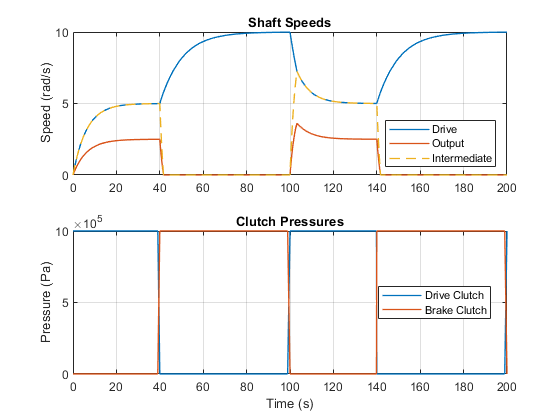Clutches for Accelerating and Braking
This example the use of clutches to accelerate and decelerate a pair of shafts connected by a gearbox. The gear connects the output and intermediate shafts. The inertia for both of these shafts is included in the Inertia Output Shaft component. This pair of shafts is connected via one clutch to a drive shaft which is driven by a torque. These shafts are also connected via a second clutch to a stationary point.
Initially, the drive clutch is engaged and all three shafts are accelerated by the torque source. The states of the drive clutch and brake clutch are then changed simultaneously. This disconnects the drive shaft from the geared shafts and engages the brake clutch, which acts as a brake and dissipates the energy of the geared shafts. The drive shaft accelerates upon the change of clutch states, for less inertia is connected to the torque source.
Model

Simulation Results from Simscape Logging
The plot below shows the speeds of a drive shaft, intermediate shaft, and an output shaft. The intermediate and output shafts and are connected by a gearbox. Two clutches control the rotation of these shafts. The drive clutch connects them to the drive shaft which is driven by a constant torque source. The brake clutch connects them to a stationary point. As these clutches engage and disengage, the speed of all shafts change.
